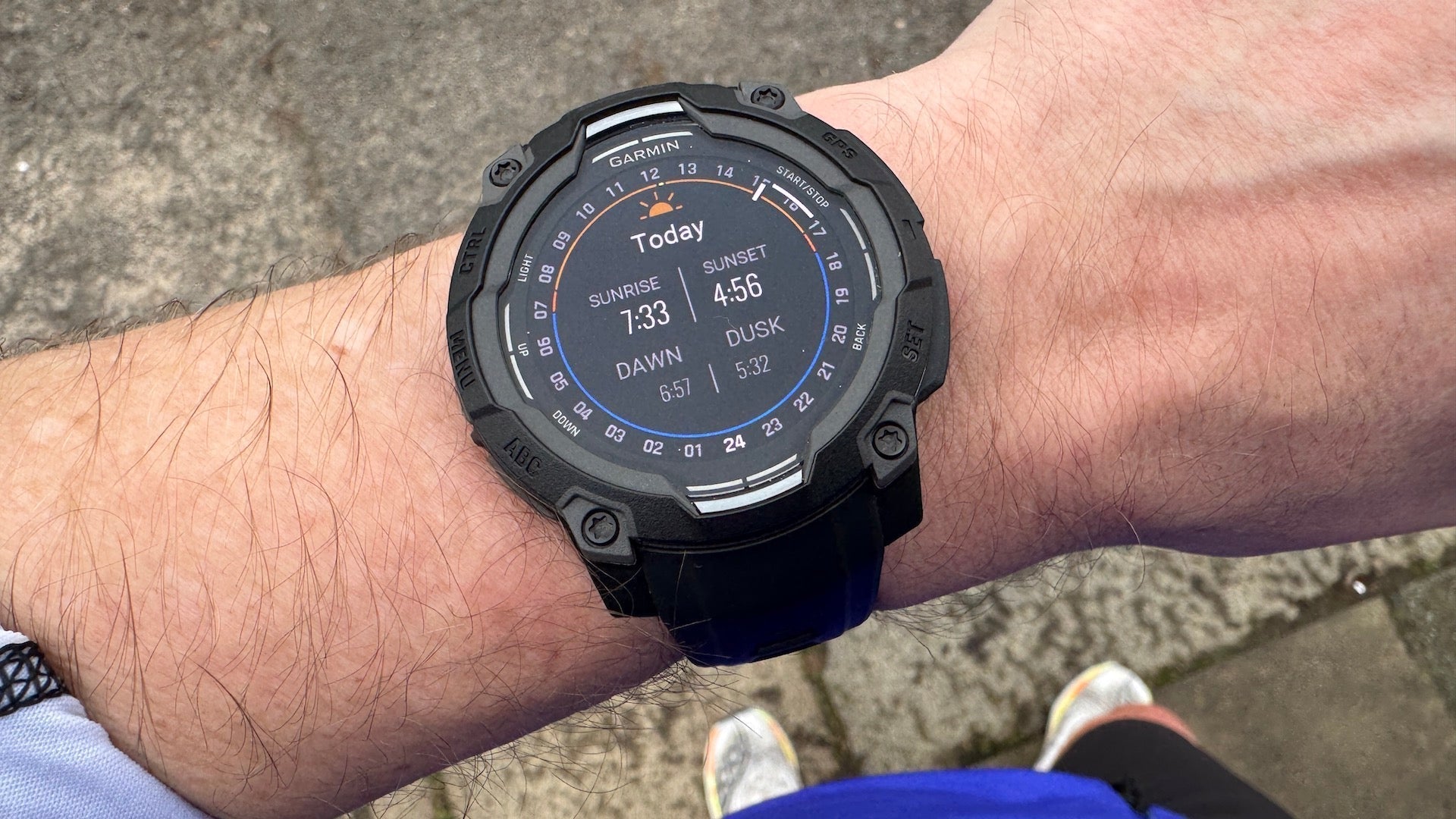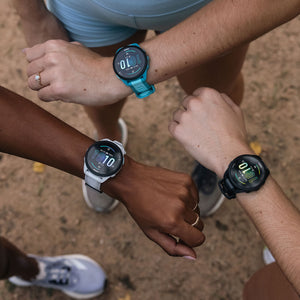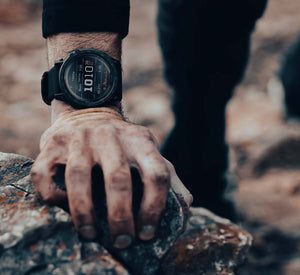
Garmin Instinct 3 Review: Best compact Garmin for rugged adventure?
Garmin’s small-but-rugged sports watch now offers the choice of battery-boosting solar or bright AMOLED options. It packs extra training smarts and a big GPS battery life. But is it the complete compact adventure watch we’ve been looking for?
The Garmin Instinct has always been small but mighty. An appealing mix of a lighter, more wearable rugged design with a good sweep of sports tracking and adventure tools, plus long-lasting GPS battery life. A kind of fenix Lite. Almost.
The new Garmin Instinct 3 stays true to that adventure-ready DNA but now offers the choice of a bright, color, smartwatch-style AMOLED display or a solar model with five times better solar charging power. Throw in a few added tracking and training smarts, dual frequency GPS, smart tools like Garmin Messenger – and a more affordable price tag – and on paper it’s pretty compelling.
But how does it stack up alongside the best mid-range sports watches going right now? Is it genuinely a cheaper alternative to the fenix 8? I spent a month testing the new Garmin Instinct 3 AMOLED 45mm to find out. Read on for the verdict in my Garmin Instinct 3 review.
Garmin Instinct 3: An Introduction & Design
While the fenix 8, epix Pro (Gen 2) and the Enduro 3 are Garmin’s biggest, buffest adventure-ready sports watches, the Garmin Instinct 3 takes some of that toughness – and tracking-ness – and condenses it into a more compact package.
The AMOLED and Solar versions offer the choice between a vibrant smartwatch-style display or longer solar-boosted battery life. Yes, you get less screen real estate than some rivals but you’re trading display size for rugged styling that suits smaller wrists.
This is one to check out if you’ve been put off by the size of bigger Garmin watches and rivals like the COROS Vertix 2.
The Garmin Instinct 3 is built to take knocks. It has a scratch-resistant lens and an aluminum-reinforced bezel to toughen things. It’s tested to military grade durability standard with a 100m water rating.
There’s more than a touch of the Casio G-Shock styling here. That’s quite unique among the best running watches.
Beyond the bold, robust styling, the Instinct 3 packs a pretty comprehensive suite of tracking, training, and health firepower. Many of Garmin’s familiar tools are here including dual frequency GPS, new training load insights, and sleep tools (more on that below).
You get pretty much everything you need to track most adventures whether you’re running, hiking, riding, or swimming. Plus plenty to monitor your fitness progress and daily health.
I was a bit surprised that the new AMOLED option forgoes a touchscreen. That’s a rarity among AMOLED watches. Instead you get Garmin’s standard five-button controls. Those have a flatter design than the fenix buttons and were harder to use at times – particularly with gloves. Sadly there’s also no quick release straps.
It’s also worth noting that Garmin opted to use the last-gen optical heart rate sensor so you’re missing out on Garmin’s ECG capabilities here. On the plus side, you do get the excellent front-facing flashlight which is a massive tick.
Garmin Instinct 3: How I Tested
For this review, I spent a month wearing the Garmin Instinct 3 AMOLED 45mm.
I trained with it, slept with it and put it up against the likes of the more advanced Garmin fenix 8 AMOLED and closely priced rivals like the Suunto Race Titanium S, and the Polar Vantage M3 along with a Garmin HRM Pro+ chest strap.
I monitored my training data, pored over heart rate charts and zoomed in on GPS tracks to discover how it compares for comfort, features, accuracy, and battery life.
Models, Sizes, & Prices
The Garmin Instinct 3 line-up splits into two: the bright shiny AMOLED screen model and the Solar option that comes with Memory-in-Pixel (MIP) displays. Both come in two sizes, 45mm and 50mm.
The AMOLED models pack larger displays than the Solar – 1.2” display on the 45mm, and a 1.3” display on the 50mm. That compares 0.9” and 1.1” displays on the equivalent Solar models.
There’s a variety of colors to choose from. The standard black is available on AMOLED and Solar but there are various limited edition jazzed up designs which are model-specific, like the Neotropic on the AMOLED and the Twilight on the Solar.
When it comes to price, at launch, the Garmin Instinct 3 price was set at:
Garmin Instinct 3 AMOLED 50mm: $499
Garmin Instinct 3 AMOLED 45mm: $449
Garmin Instinct 3 Solar 50mm: $449
Garmin Instinct 3 Solar 45mm: $399
There’s also a Garmin Instinct E that comes in 40mm and 45mm sizes, at $299 and $299 respectively.
If you scan up the Garmin watch food chain at the other rugged models, the Instinct 3 is considerably cheaper. The Garmin fenix 8 models start at $999.99 for the 43mm AMOLED and $1099.99 for the 47mm Solar.
Outside of Garmin, rival rugged AMOLEDs include the Suunto Race S at $349, the Polar Polar Grit X2 Pro at $749.99 and the non-AMOLED COROS Vertix 2S which is also a chunk pricier at $699.
Garmin Instinct 3 vs Garmin fenix 8: What’s the Difference?
The differences between these two multisport watches depend heavily on which models you compare from the fenix and Instinct line-ups.
However, if you’re trying to work out which is the best Garmin running watch, beyond the big price discrepancy, the most obvious differences boil down to this: the fenix 8 is bigger, heavier with more features, newer hardware, and a longer battery life. But you’ll pay for those upgrades.
The Garmin Instinct 3 has a lighter, more eye-catching design. It’s a bit more cool-kids Casio G-Shock. It’s also lighter and more compact than the fenix 8 but uses less premium materials. For example, while the fenix 8 case uses stainless steel or titanium, the Instinct 3 boosts its robustness with a metal ring in the bezel.
The Garmin fenix 8 packs more features and better hardware including Garmin’s latest Gen 5 more accurate heart rate sensor with ECG and skin temperature measurements. The Instinct 3’s Gen 4 optical set-up lacks those smarts.
The fenix 8 is a smarter watch. It boasts a mic and speaker to enable voice notes and some basic voice commands. There’s more storage and the WiFi connectivity makes it much easier to sync with the Garmin Connect app, update the watch, and add music.
Speaking of music, the Instinct 3 lacks the fenix 8’s offline music streaming services including Spotify and Amazon Music.
Finally, the Garmin fenix 8 is a more competent navigator with offline mapping, routable maps, and the excellent ClimbPro tool. The Instinct 3 just offers basic breadcrumb and back to start navigation.
Garmin Instinct 3: Battery Life
The Garmin Instinct has always balanced longer-lasting GPS battery life with an excellent range of tracking firepower.
The battery life varies depending on the model with Solar editions lasting longer than the more power-thirsty AMOLED watches, thanks to the more efficient screens and that sun harvesting prowess.
On paper, our Garmin Instinct 3 AMOLED 45mm battery life is listed at 23 hours using the Dual Frequency GPS. That rises to 25 hours in All Systems GPS mode. You get 18 days in smartwatch mode without the Always On screen.
In testing, the Garmin Instinct 3 AMOLED battery life lived up to billing. With the Always On screen on:
- A 1.5 hour run using Max Accuracy Dual Frequency mode burned 4%
- A 2.5 hour run using Max Accuracy Dual Frequency mode burned 8%
- The average daytime usage with no training was around 6%
- The average overnight burn was 1%
In total, I got nine days of general usage with seven hours of GPS training and two hours of indoor heart-rate cardio.
With the Always On screen off, I got even more staying power.
- A 1.5-hour run with All Systems GPS/Always On burned 1%
- A 1-hour run with Max Accuracy Dual Frequency/Always On burned 3%
- The average overnight burn was around 1%
Running, Fitness, and Health Features
The Garmin Instinct 3 has a very comprehensive range of tools for all the core activities. Running, cycling, and swimming are well catered for. Runners get indoor, trail, and track modes, along with running power from the wrist. Swimmers have indoor and outdoor modes. Plus there’s triathlon and duathlon modes with new automatic transitions, to cater for the swim–bike-runners.
When it comes to training and fitness insights, you get all the usual suspects including training effect, training status, training load, recovery, fatigue, virtual pacer, race time predictor, VO2 max estimates, threshold zones, training plans, and interval training. Plus handy suggested workouts for running and cycling.
The strength training tools have also been boosted with strength workout animations and Garmin’s muscle map that shows what you’ve been working.
When it comes to health tracking, the Instinct 3 covers everything from real-time heart rate and Pulse Ox2 monitoring to advanced sleep tracking and stress management. Morning Report summarizes everything from sleep quality, to training readiness. Garmin also added nap detection and Garmin Sleep Coach.
There are a few commissions: you don’t get Garmin’s Hill or Endurance Scores but there’s pretty much everything you need to build fitness, train, race, and recover with a slick-looking partner app that lets you dig deeper into the details.
Garmin Instinct 3: Mapping and Navigation
This is where things fall down. Surprisingly for an adventure-ready watch at this price, the Garmin Instinct 3 doesn’t offer offline maps. Navigation smarts are limited to basic breadcrumb navigation with turn-by-turn notification and off-course alerts.
It’s a big omission considering plenty of cheaper – and similarly priced – rivals now offer offline mapping. And this is an adventure-skewed watch.
Smartwatch and Safety Tools
The Garmin Instinct 3’s smartwatch capabilities are also a touch limited when you compare them to the higher-end Garmins. You get the usual smartphone notifications. Android owners can reply with simple pre-written texts. It’s compatible with Garmin Messenger, you can and there’s Garmin Pay NFC contactless payments. But you don’t get the voice tools or offline music streaming.
The safety set-up is solid with live tracking and incident detection but sadly no safety siren.
Garmin Instinct 3: Heart Rate and GPS Accuracy
The Garmin Instinct 3 offers multiband/dual frequency GPS, along with Garmin’s clever SATIQ feature that automatically finds the best settings to maintain accuracy while conserving battery.
I tested the Garmin Instinct 3 accuracy and heart rate reliability against some rivals, including the Garmin fenix 8 AMOLED and the Suunto Race S Titanium. I also switched between a Polar H10 and Garmin HRM Pro+ chest strap for benchmarking.
My test runs mainly covered semi built-up urban streets with some open sky park runs and tree-covered river paths thrown in. I also hit the sauna for some heat training.
I switched up the power and GPS accuracy modes from the All Systems + Dual Frequency Max Accuracy, down to All Systems Only mode that, in theory, sacrifices some accuracy for staying power.
In testing, the dual frequency GPS performed well against the pricier Garmin fenix 8 for total distances and when you dig into the tracks. Over a 20-mile run the fenix 8 came in at 20.10 miles while the Instinct 3 clocked 20.07.
It wasn’t perfect in tricky situations like underpasses but neither was the fenix 8.
The heart rate was more hit and miss for me. On steady runs it tended to match the chest strap closely with the odd dip or spike. During intervals it wasn’t as reliable.
Bottom Line: Should You Buy the Garmin Instinct 3?
Should you buy this new Garmin watch? That depends. This is a fun, catchy-styled, more affordable fenix alternative and there’s a lot to like. Punchy smartwatch screen (or solar skills), good battery life, reliable GPS, and light but durable build. Throw in a pretty comprehensive suite of health, training, tracking, and performance tools and the Instinct 3 is a capable, adventure-ready watch.
However, there are some important omissions. If you want the best mapping tools, streaming music, or a touchscreen, you’ll need to look elsewhere. The lack of offline maps is a big miss here.
If that’s important to you, two alternatives include Garmin’s epix (Gen 2) and the Garmin fenix 7. They are bigger, heavier, older watches but they offer more feature firepower, including those missing maps.
Outside of the Garmin stable, the Suunto Race S is another compact option that offers a similar feature set up but with offline maps. The Suunto Race S Titanium also packs a more premium feel.
About Journalist Kieran Alger
Co-founder of The Run Testers, Kieran Alger is an experienced journalist who has spent more than a decade testing running gear. Regularly found wearing four GPS running watches at once, if it claims to make you run better or enjoy running more, he has probably tested it. He's a borderline obsessed runner with more than 50 marathon and multiple ultra finishes. In 2022, he became the first person to run Europe's river Danube from sea to source, a measly 1,830 miles in 66 days. And still had time to test running gear.
Check him out on Instagram or his YouTube Channel!














